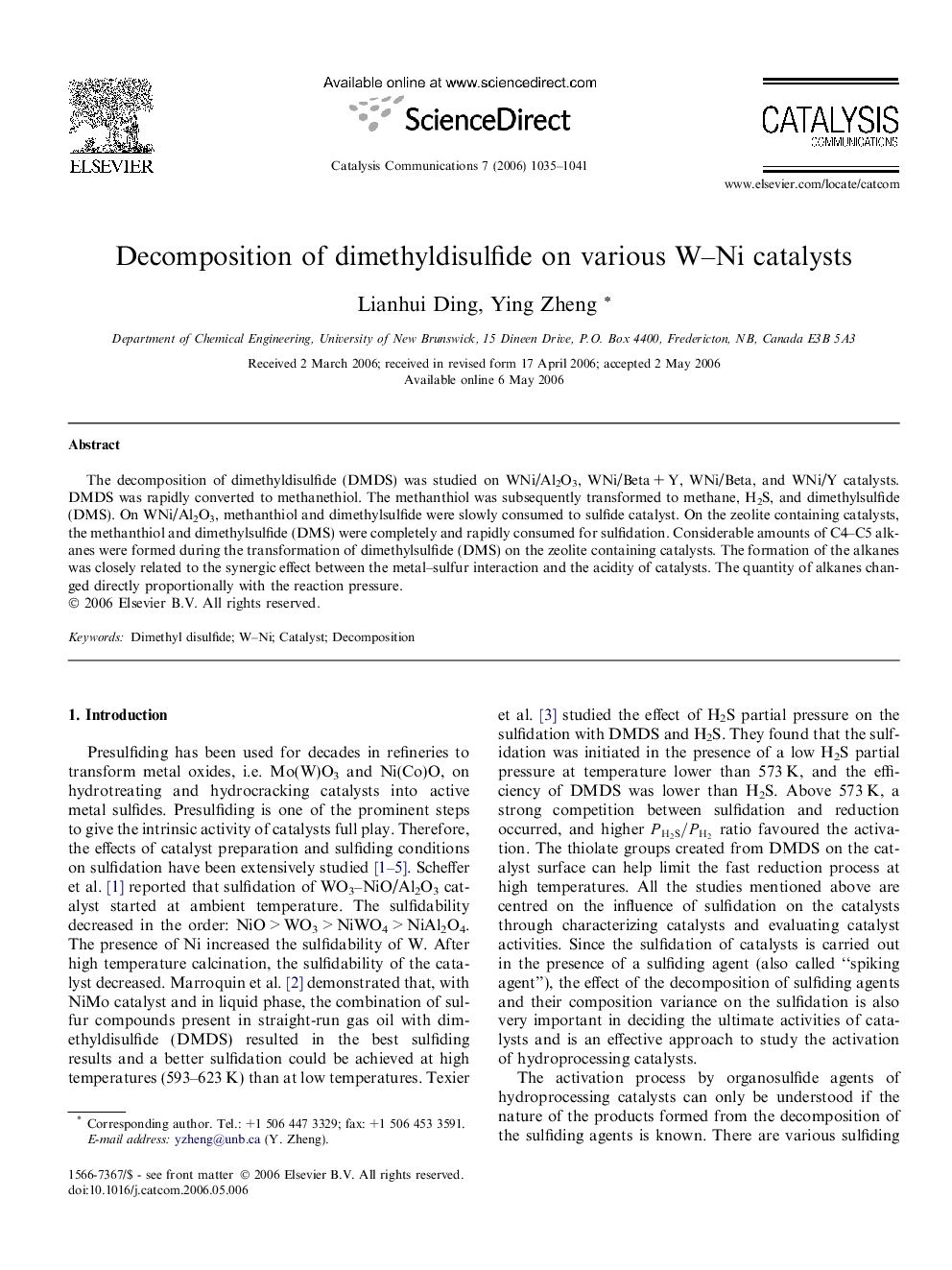| Article ID | Journal | Published Year | Pages | File Type |
|---|---|---|---|---|
| 53153 | Catalysis Communications | 2006 | 7 Pages |
The decomposition of dimethyldisulfide (DMDS) was studied on WNi/Al2O3, WNi/Beta + Y, WNi/Beta, and WNi/Y catalysts. DMDS was rapidly converted to methanethiol. The methanthiol was subsequently transformed to methane, H2S, and dimethylsulfide (DMS). On WNi/Al2O3, methanthiol and dimethylsulfide were slowly consumed to sulfide catalyst. On the zeolite containing catalysts, the methanthiol and dimethylsulfide (DMS) were completely and rapidly consumed for sulfidation. Considerable amounts of C4–C5 alkanes were formed during the transformation of dimethylsulfide (DMS) on the zeolite containing catalysts. The formation of the alkanes was closely related to the synergic effect between the metal–sulfur interaction and the acidity of catalysts. The quantity of alkanes changed directly proportionally with the reaction pressure.
